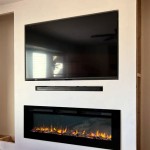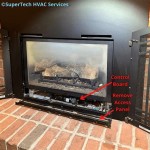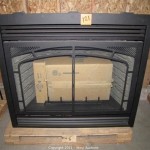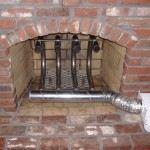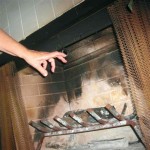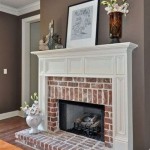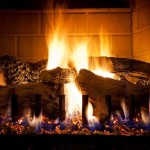Stone Fireplace Shelf: A Comprehensive Guide
A stone fireplace shelf, also referred to as a mantel, serves as a unifying element within a fireplace design. It bridges the gap between the firebox and the surrounding wall, providing both aesthetic appeal and practical functionality. The selection of a stone fireplace shelf requires careful consideration of material, dimensions, style, and installation techniques to ensure a cohesive and visually pleasing result.
Stone, as a construction material, offers inherent advantages. Its durability ensures a long lifespan, withstanding the heat generated by a fireplace without significant degradation. The variety of available stone types – including granite, marble, limestone, and slate – allows for customization to match a broad range of interior design schemes. Each stone possesses unique veining patterns and color variations, contributing to a distinctive and natural aesthetic.
A stone fireplace shelf is more than simply a decorative element; it provides a functional surface. It can serve as a display area for artwork, photographs, decorative objects, and seasonal decorations. The shelf also acts as a buffer, deflecting heat upwards and away from combustible materials above the fireplace. The size and depth of the shelf should be carefully considered to accommodate intended uses and ensure adequate heat protection.
Key Considerations for Selecting a Stone Fireplace Shelf
Choosing the right stone fireplace shelf involves several critical decisions. These include material selection, dimensional considerations, stylistic integration, and the assessment of structural support requirements. Overlooking any of these aspects can compromise both the aesthetics and the safety of the installation.
Material Selection: The choice of stone material significantly impacts the overall aesthetic and performance of the fireplace shelf. Granite, known for its hardness and resistance to staining, is a popular choice for high-traffic areas. Marble provides a luxurious and elegant appearance; however, it is more porous than granite and requires periodic sealing to prevent staining. Limestone offers a softer, warmer aesthetic, often preferred for rustic or traditional designs. Slate, with its fine-grained texture and dark color, complements contemporary and minimalist interiors. Each stone type exhibits varying levels of heat resistance and porosity, which must be considered in relation to the frequency and intensity of fireplace use.
Dimensional Considerations: The dimensions of the stone fireplace shelf, specifically its length, depth, and thickness, should be proportional to the size of the fireplace and the surrounding wall. A shelf that is too small may appear insignificant and fail to provide adequate heat protection, while a shelf that is too large can overwhelm the space. The depth of the shelf is particularly important if it is intended to be used for displaying objects. A deeper shelf offers more surface area but may also protrude further into the room. The thickness of the stone contributes to its structural integrity and visual weight; thicker shelves typically convey a sense of solidity and permanence. Building codes often specify minimum clearances between the fireplace opening and combustible materials, which must be taken into account when determining the shelf dimensions.
Stylistic Integration: The style of the stone fireplace shelf should complement the overall architectural style of the room. A sleek, minimalist shelf made of polished granite or marble may be appropriate for a modern home, while a rough-hewn limestone or wooden beam mantel may be more suitable for a rustic or traditional setting. The color and texture of the stone should also harmonize with the surrounding walls, flooring, and furniture. Consider the existing color palette and choose a stone that either blends seamlessly or provides a subtle contrast. The edge profile of the shelf, whether square, rounded, or chamfered, can further enhance the desired aesthetic.
Types of Stone Suitable for Fireplace Shelves
The selection of stone for a fireplace shelf is broad, each offering a distinct aesthetic and performance profile. Understanding the specific properties of each stone type is crucial for making an informed decision that aligns with both aesthetic preferences and practical requirements.
Granite: Granite is an igneous rock renowned for its exceptional durability and resistance to heat, scratches, and stains. Its granular texture and varied colors, ranging from light gray to deep black, make it a versatile choice for a variety of design styles. Granite is relatively non-porous, making it easy to clean and maintain. Its robustness makes it suitable for high-use fireplaces and areas where spills are likely to occur.
Marble: Marble is a metamorphic rock prized for its elegant veining and polished surface. It is available in a wide range of colors, including white, gray, beige, and green. Marble adds a touch of luxury to any space; however, it is more porous than granite and susceptible to staining from acidic substances. Sealing is crucial to prevent damage. While marble can withstand heat, prolonged exposure to high temperatures can cause discoloration or cracking. Marble is often best suited for fireplaces that are used less frequently or those with a focus on aesthetics rather than high heat output.
Limestone: Limestone is a sedimentary rock characterized by its soft, earthy tones and subtle textures. It is commonly found in shades of beige, cream, and gray. Limestone offers a more rustic and understated aesthetic compared to granite or marble. Its porous nature requires sealing to prevent staining and water damage. While limestone is relatively heat-resistant, it is not as durable as granite and may be prone to chipping or scratching. Limestone is a popular choice for traditional and country-style interiors.
Slate: Slate is a fine-grained metamorphic rock known for its dark, consistent color and natural cleft surface. It is typically found in shades of gray, black, and green. Slate is highly durable and resistant to heat, water, and staining. Its sleek, contemporary look makes it well-suited for modern and minimalist designs. Slate requires minimal maintenance and is a practical choice for high-use fireplaces. The natural cleft surface adds texture and visual interest.
Soapstone: Soapstone is a metamorphic rock known for its smooth, soft texture and excellent heat retention properties. It is naturally dark gray and darkens over time with exposure to oils. Soapstone is non-porous, making it resistant to staining and chemical damage. It also has a high thermal mass, meaning it absorbs and radiates heat slowly, making it a good choice for fireplaces used for warmth. Soapstone is a practical and durable option for both traditional and contemporary settings.
Installation and Maintenance of Stone Fireplace Shelves
Proper installation is crucial for the structural integrity and safety of a stone fireplace shelf. The weight of the stone requires adequate support to prevent sagging or collapse. Regular maintenance, including cleaning and sealing, will prolong the life and beauty of the shelf.
Installation Considerations: The installation process typically involves attaching the stone shelf to the wall using mechanical fasteners and adhesive. The type of fasteners and adhesive will depend on the weight of the stone and the material of the wall. It is essential to ensure that the wall is structurally sound and capable of supporting the weight of the shelf. For heavier shelves, a support structure may be necessary. Professional installation is recommended to ensure proper alignment, secure attachment, and adherence to building codes. The installer should also ensure that the shelf is properly sealed to prevent moisture penetration.
Cleaning and Maintenance: Regular cleaning is essential to maintain the appearance of a stone fireplace shelf. Use a soft cloth and a mild detergent to remove dust and dirt. Avoid using abrasive cleaners or harsh chemicals, as these can damage the stone surface. For marble and limestone, it is important to clean up spills immediately to prevent staining. Sealing the stone periodically will help to protect it from moisture and staining. The frequency of sealing will depend on the type of stone and the level of use. Consult with a stone care professional for recommendations on appropriate cleaning and sealing products.
Addressing Potential Issues: Over time, stone fireplace shelves can develop cracks, chips, or stains. Small cracks and chips can often be repaired with epoxy or stone repair kits. Stains can be removed with specialized stone stain removers. For more significant damage, professional repair may be necessary. It is important to address any issues promptly to prevent further damage and maintain the structural integrity of the shelf. Regularly inspect the shelf for signs of wear and tear, and take corrective action as needed.
The selection and installation of a stone fireplace shelf represent a significant investment in both the aesthetic and functional aspects of a home. Careful consideration of material properties, dimensional requirements, stylistic integration, and proper installation techniques will ensure a beautiful and long-lasting addition to any fireplace.

Barnwood Fireplace Mantel The Collection

Vail Wood Mantel Shelf Fireplace Shelves Floating Mantelsdirect Remodel Prefab

Chiseled Stone Series 6 Mantel Grey Capo Fireside

15 Fireplace Mantel Shelves To Enhance The Appearance Of Your Hearth Inspiration

How To Build And Hang A Mantel On Stone Fireplace Shanty 2 Chic

Aesthetically Designed Stone Fireplace Mantels Selexstone Selex

Magrahearth Natural Wood Concrete Mantel Fireplace Stone Patio

Fireplace Mantel Installation Before And After

Fireplace Mantels Three Questions To Consider The Cultured Stoners

Amhurst Cast Stone Fireplace Mantels Old World Stoneworks
Related Posts

